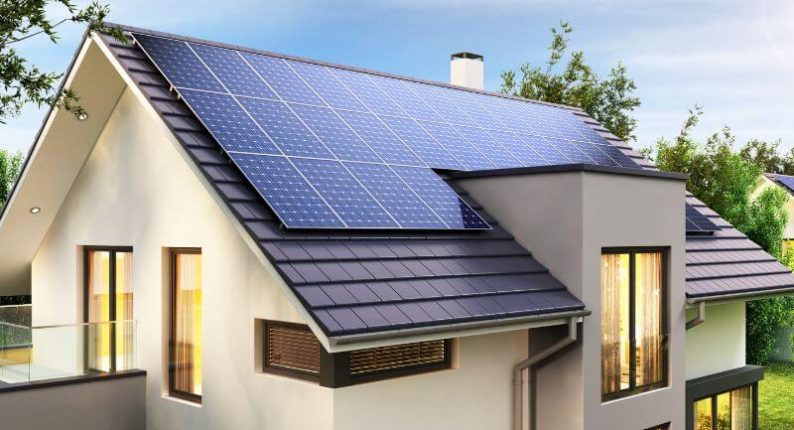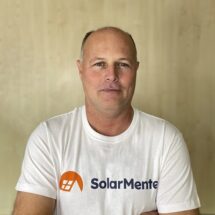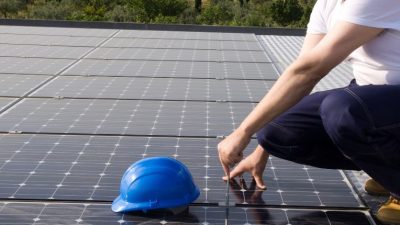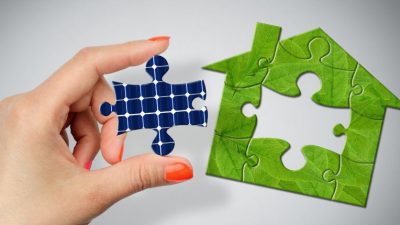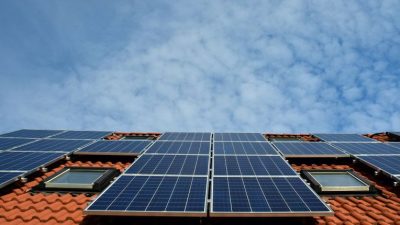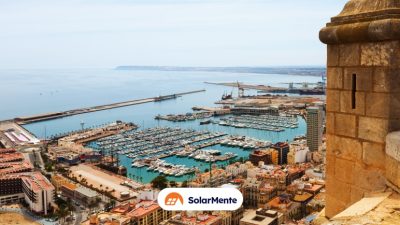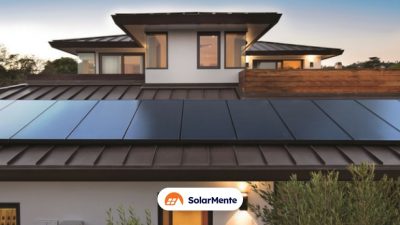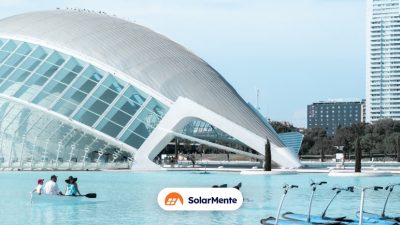Choosing a high-performance solar panel ensures that you make the most of the space available for the installation, generating more energy and, therefore, greater economic savings and less dependence on other energy sources.in this post we will help you understand the keys to the performance of solar panels.
Although often confused, the efficiency of a solar panel is a technical term that refers to the percentage of sunlight that the panel can convert into electricity. On the other hand, actual efficiency takes into account operation under real-world conditions, which can reduce efficiency due to factors such as dirt, shade and temperature.
Factors affecting the performance of solar panels
1. Quality of materials
The quality of materials is a crucial factor in the performance of solar panels. Panels made with higher quality photovoltaic cells tend to have better energy efficiency, resulting in higher electricity production per square metre. This means that a solar panel with higher efficiency will generate more energy in less space, which is critical in residential or commercial installations with space constraints.
2. Manufacturing technology
There are different technologies that influence the efficiency of solar panels:
- Monocrystalline: These panels are the most efficient, with rates ranging from 17% to 23%. They are made from a single silicon crystal, which allows for greater efficiency in the conversion of sunlight.
- Polycrystalline: Although less expensive, polycrystalline panels have a slightly lower efficiency (14-16%). They are made from multiple silicon crystals, which reduces their conversion capacity.
- Thin film: With an efficiency ranging from 7% to 9%, these panels are less efficient but can be useful in specific applications.
3. Panel orientation and tilt
The correct orientation and tilt of solar panels can significantly influence their performance. Panels should face south (in the northern hemisphere) to maximise solar exposure throughout the day. In addition, an optimal tilt angle, which depends on the latitude and local climate, is essential for the panels to capture as much solar radiation as possible.
4. Climatic conditions
Temperature and weather conditions also influence the performance of solar panels. Although it may seem contradictory, excessive heat can reduce the efficiency of solar panels. For every degree Celsius that the temperature of the panel exceeds 25°C, its performance is reduced by 0.4%.
This phenomenon, known as temperature coefficient, is an important parameter when choosing a solar panel, especially in hot climates.
In countries such as Germany or Norway, the solar energy potential is not the same as in Spain. Even so, it is still very cost-effective to install photovoltaic systems in these geographical areas.
If we talk about solar irradiation in the Spanish territory, it far exceeds the rest of European countries with 2,000-3,000 hours of sunlight received per year.
What factors influence whether you get more solar irradiation? Always take into account the climate of the area, the inclination of the panels and shading.
Of these, time plays a fundamental role and will allow more or less radiation to the surface. There are three types of radiation: direct, diffuse and reflected.
Direct radiation, as the name indicates, is that which comes directly from the sun. Diffuse radiation, on the other hand, is the reflection it produces on clouds.
Finally, reflected radiation is generated by light bouncing back from the surface. It will only be seen in dwellings located perpendicular to the area.
In short, depending on the climate of the geographical area where you live, you will receive more or less solar radiation. And this will have an impact on the performance of your system.
5. Shading and cleaning
The presence of shade, whether partial or total, negatively affects the performance of solar panels. Shading not only reduces the amount of sunlight hitting the panels, but can also lead to “hot-spots”, which are areas of the panel that overheat and can reduce the lifetime of the panel.
Similarly, accumulated dirt on the panels, such as dust or debris, also reduces their efficiency.
Efficiency rating of solar panels
The efficiency of solar panels can be classified in different ranges. The most common ones are presented below:
- Low efficiency (16-17%): This type of panel is suitable for installations with large available surface areas, as its energy production is lower per square metre.
- Medium efficiency (18-19%): This is an intermediate option, balancing cost and performance.
- High efficiency (19%+): These panels represent the latest technology on the market and are recommended when seeking to maximise energy production in a limited space.
In addition, efficiency is linked to the size and power of the solar panel. Here are some examples:
- 250W panel: 14.7% efficiency.
- 400W panel: 20% efficiency.
High-efficiency panels tend to have a higher price tag, but in the long run they prove to be a more profitable investment due to their higher power generation capacity.
How to improve the performance of our photovoltaic panels
Solar panels are made of resistant materials to avoid touching the system as little as possible. However, we can improve the performance of the installation through a number of simple functions:
Clean the panels 3-4 times a year. Accumulated dirt can reduce the production capacity of the system.
Use the right inverter. This will influence the yield of the solar panels. String inverters will be affected by shading. Our recommendation is to opt for more advanced technologies such as micro inverters or power optimisers.
Choose the correct wiring size. Different wiring configurations can influence the performance of the installation and the amount of energy production.
To detect any possible system issues, you can always go to the installer application and check where the problem lies.
Emerging technologies in solar panels
In the last decade, solar technologies have advanced rapidly, with the development of new types of panels that offer higher efficiencies and durability. Among the most prominent technologies are:
- Bifacial cells: These panels can capture sunlight on both sides, significantly increasing the amount of energy generated, especially when installed on reflective surfaces.
- Heterojunction (HJT): These solar cells combine the advantages of monocrystalline technologies and thin-film cells, achieving efficiencies of over 25%.
- Perovskite: Still in the experimental stage, perovskite solar cells promise to revolutionise the industry by offering higher efficiencies than today’s cells, as well as being cheaper to manufacture.
Comparison between new and second-hand panels
The performance of second-hand solar panels is significantly lower than that of new ones. This difference can be as much as 15-20%, due to the natural degradation of materials over time.
On average, solar panels lose 1-2% of their production capacity for each year of use. In addition, second-hand panels may have been damaged during disassembly and transport, which also affects their performance.
Frequently asked questions
1. What is the difference between efficiency and performance in a solar panel?
Efficiency is the panel’s ability to convert sunlight into electricity, expressed as a percentage. Performance refers to the actual efficiency of the panel once installed, taking into account factors such as orientation, climate, dirt and degradation over time.
2. What factors influence the degradation of solar panels?
The factors that most influence the degradation of panels are climate (especially heat), exposure to external elements (dirt, dust, leaves) and the quality of the materials used in the manufacture of the panel.
3. How long do solar panels last?
On average, solar panels have a lifetime of 25 to 30 years. However, they continue to generate electricity after that time, albeit with reduced efficiency due to annual degradation.
4. Is it cost-effective to invest in high-efficiency solar panels?
Yes, although high-efficiency solar panels have a higher initial cost, their ability to generate more electricity over their lifetime makes them a more cost-effective option in the long run.
5. Is it possible to increase the performance of an already installed solar panel?
Yes, regular maintenance, such as cleaning the panels from dust and dirt, adjusting their orientation and avoiding shading, can increase the performance of an already installed solar panel.
At SolarMente, we work with manufacturers that provide high efficiency panels to maximise energy production. In this way, the savings on electricity bills will be noticeable thanks to a good self-consumption system.
To find out, try our solar calculator and see the potential savings on your monthly electricity bill.

